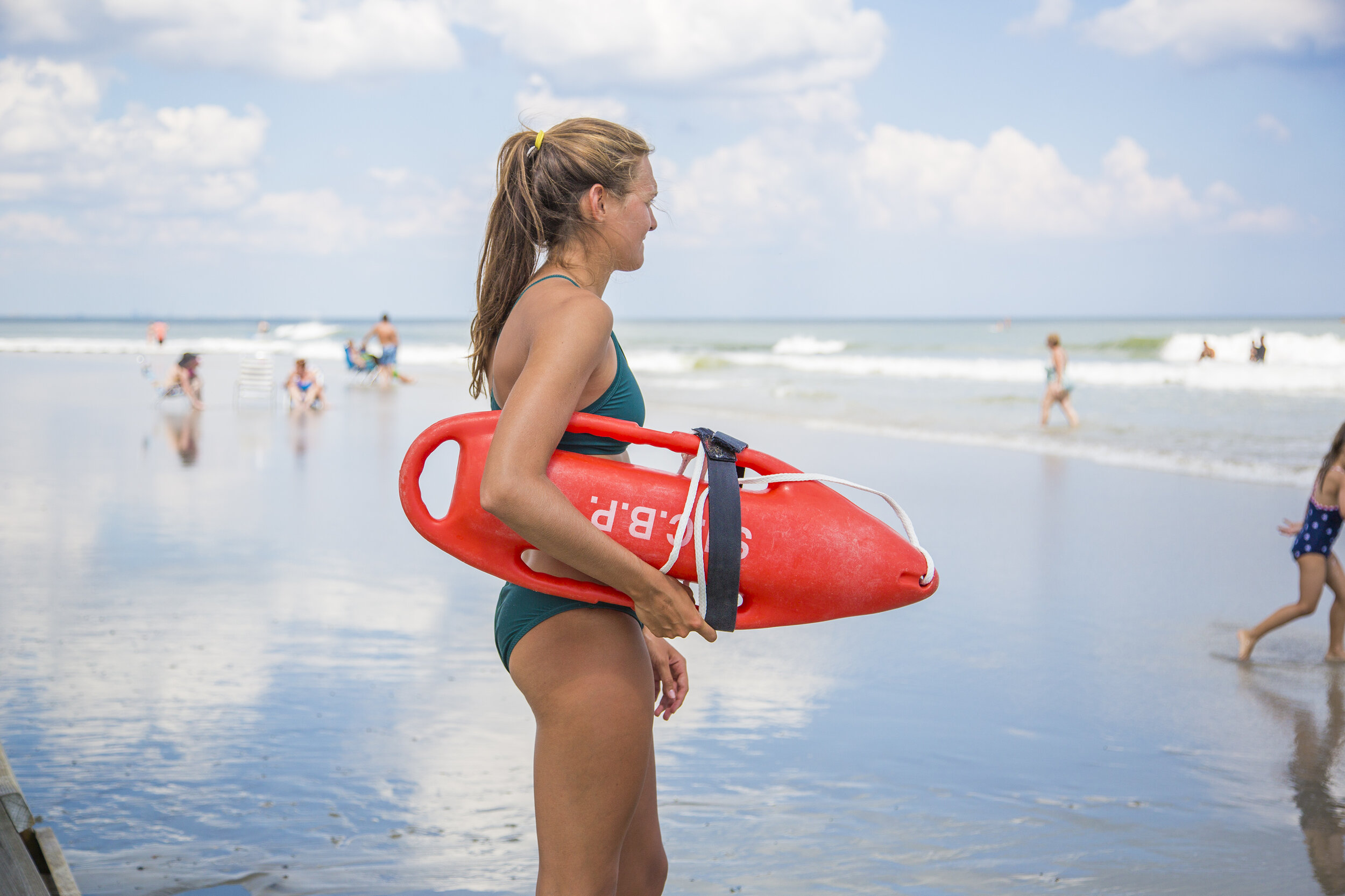Tips for Your Dips in the Ocean
Keep an eye out for the lifeguards and always swim in front of them.
We are in the dog days of summer which means it is hot, hot, hot and you probably can’t wait to get into the ocean. Unfortunately, there have been a lot of lifeguard rescues on our beaches so we thought it was a great time to remind everyone of the hidden (and not so hidden) dangers that are out there. The Center for Disease Control and Prevention reports that roughly 10 people drown per day in the United States but that trained lifeguards also save thousands of lives every year. We encourage you to have a healthy respect for the ocean and to always, always swim near a lifeguard. Here is a list of additional tips to help ensure that your beach experience is a safe and memorable one.
• Always listen to lifeguard whistles and swim directly in front of the lifeguard stand. Guards are aware of ocean hazards such as rip currents, inshore holes and lateral currents. This enables them to keep bathers away from these hazards.
• Never dig parallel to the sand’s surface (a tunnel). Eventually the tunnel will collapse and suffocate anyone inside it. The sides of a hole dug in sand can also collapse. Dig holes only to waist deep. If more than one person is in the hole, the depth should be waist deep of the shortest person in the hole.
• Follow the 30/30 rule during an electric storm. Leave the beach and seek safe shelter when fewer than 30 seconds pass between the sight of lightning and the sound of thunder (flash-to-bang count). Do not return to the beach until 30 minutes have passed after your last flash-to-bang count. Whenever the lifeguards vacate the stand and leave the beach due to lightning, you should also leave the beach.
• If caught in a rip current, remain calm to conserve energy and think clearly. Do not fight the current by trying to swim directly to shore. Swim parallel to the shoreline until you are no longer in the rip. When out of the current, swim toward the shore. The first move, not panicking, is most important here. So is knowing what that move would be before ever being caught in the rip current.
• Familiarize yourself with the flags on beaches where the system is used. They often resemble the legend of traffic lights. Green usually means calm water, yellow indicates moderate conditions and red signifies high surf and strong currents. A red flag might also indicate the beach is closed for swimming. A combination of red and yellow often indicates that someone has been lost and a search is underway. Not all beaches use the flags, however. Avalon, for instance, does not; the beach patrol prefers people to listen to the lifeguards to obtain updated information.
• Check with your resident beach patrol on this, and also gain a general idea of how deep in the water they are comfortable for you to be. Generally, chest deep on a decent day is the standard. Know the whistle signals. Short bursts often denote the need for a rescue. Long whistle sounds are for instruction.
• Do not dive toward the bottom into oncoming waves. Hold your hands out in front of your head and dive through the wave. Another safe method of negotiating the waves is to squat down and allow the wave to roll over top of you. Always be aware of the wave action. Do not stand in the water with your back to the waves.
• Don’t swim before or after hours. That usually means before 10am and after 5pm, perhaps a little later on some days. Lifeguards can pull you out of the water and connect you for further medical help, if necessary. It makes sense to utilize them. This directive is even given to the guards by their beach patrol captains. If it’s good enough for the people who have an athletic background and would be most tempted to swim alone after hours, it’s good for everyone else.
• Do not play around or climb on rock jetties or groins. Fish hooks and broken glass often collect around groins and jetties. The jetties are also uneven in places and a bad step could result in an ankle being trapped in a crack between rocks, or knees and backs being affected. The jetties can be slippery, too.
• Remain properly hydrated whenever on the beach. This safety tip is of heightened importance if you consumed alcohol or coffee within the previous 12 hours.
• Remember to retain enough energy to swim back to shore. This can be especially significant for someone who spends a great deal of time in the water and drifts a little too far out.
• And, finally, if you are not sure about a rule or regulation, ask a lifeguard.
This is just a sample of the pointers that can be the ounce of prevention one needs to savor the best of the beach. You will, no doubt, add your own perspective and go fully equipped to the sand and water. Enjoy a fun, safe rest of the season.

